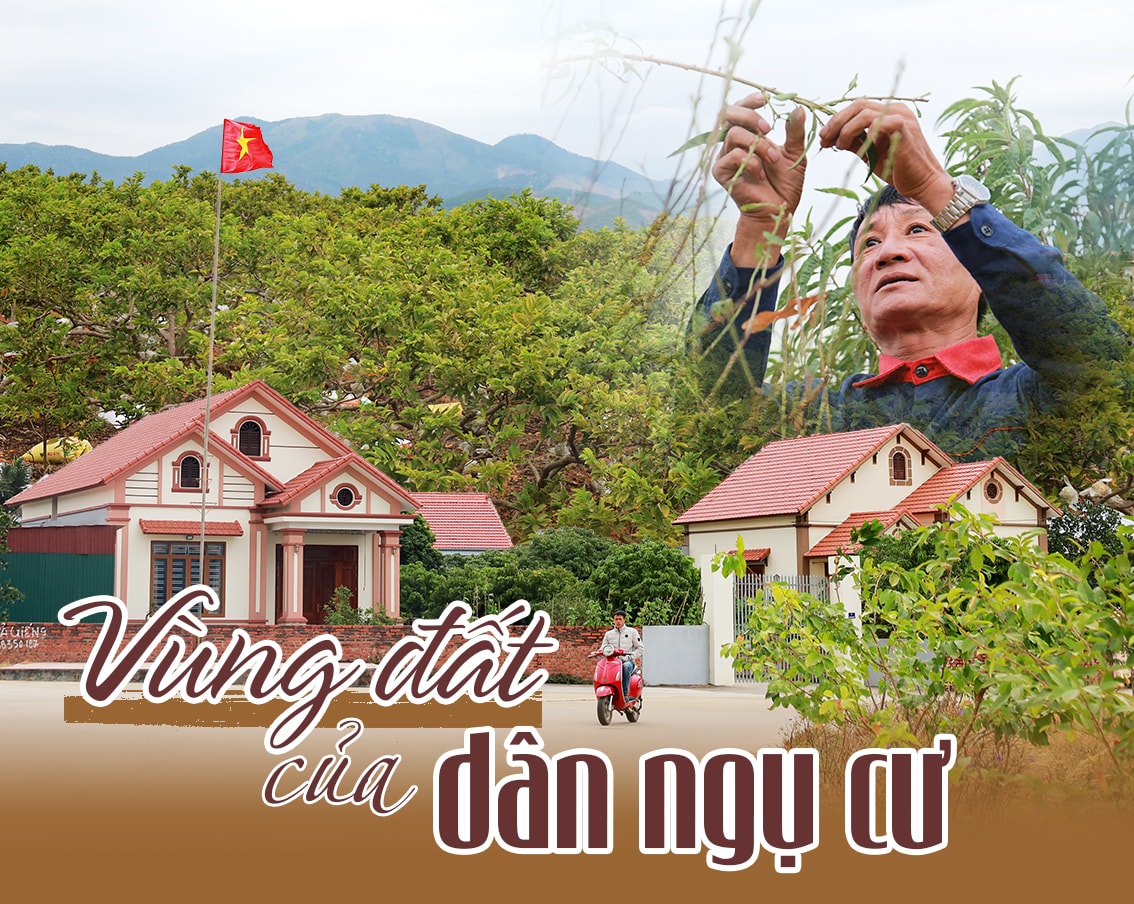
From a barren, deserted land, with the diligence and hard work of the residents, Trai Trong area (Hoang Tien ward, Chi Linh, Hai Duong) has become a fertile land. After decades of construction and development, the appearance of this land has changed day by day, the people's lives have been improved both materially and spiritually.

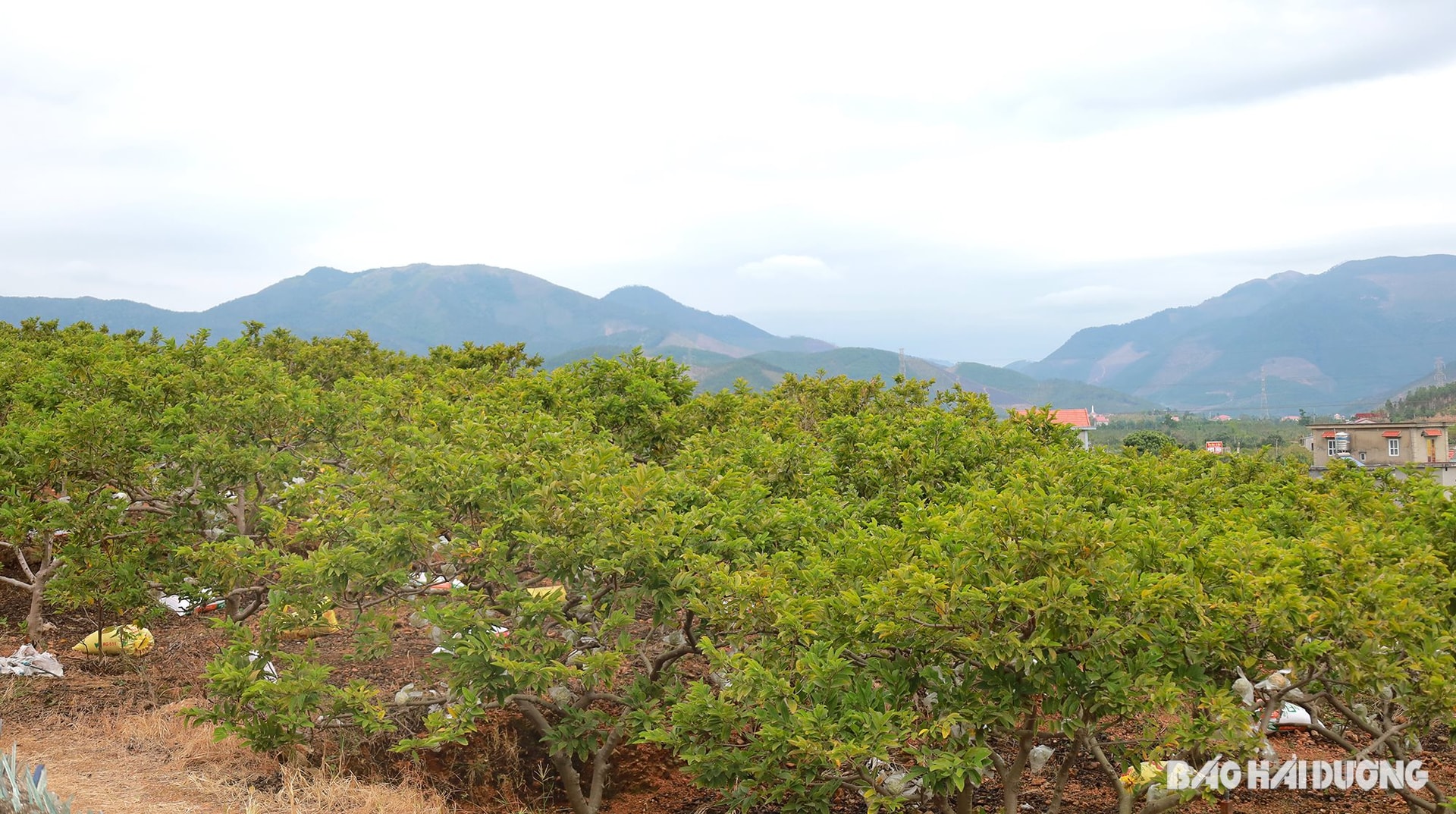
“Trai Trong is a rare residential area in Hai Duong”. The story seemed simple in a chance meeting but it aroused my curiosity. Since I was little, I heard her talk about migrations, leaving their homeland to make a living in “new economic” areas, but not in Hai Duong.
In the bitter cold of winter days, following Highway 18, we came to the residential area of Trai Trong. Far from the bustling city scene of Chi Linh City, Trai Trong is isolated, leaning against the peaceful Mau mountain range, with rolling hills in the distance. Trai Trong borders Dong Trieu of Quang Ninh province, in the area there is also Hoang Tien Prison and Chi Linh Leprosy Hospital. This makes many people mistakenly think that Trai Trong is a remote, isolated land with many difficulties.
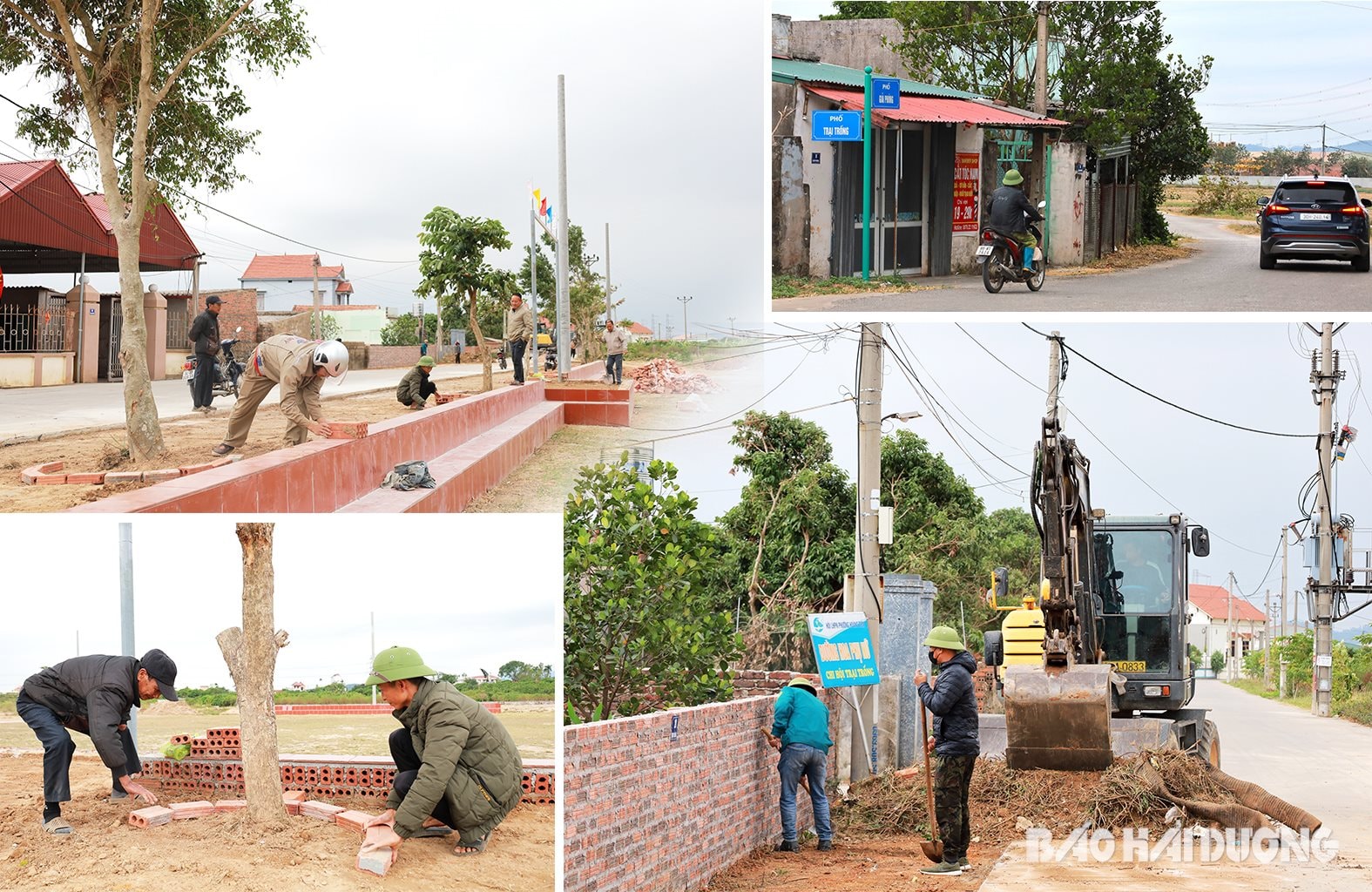
Following the introduction of the ward leader, we met Mr. Dang Ngoc Quynh, Party Cell Secretary, Head of Trai Trong residential area. We were received by a small man with brown skin and a charming smile. He is the youngest Party Cell Secretary and Head of Hoang Tien ward. When asked about the residents, Mr. Quynh smiled and said that he himself was a resident from Ha Bac (now Bac Giang province) and was the third generation living in Trai Trong. "It is the youth and the hard work of our ancestors that turned a barren land into the fertile land it is today," Mr. Quynh affirmed.
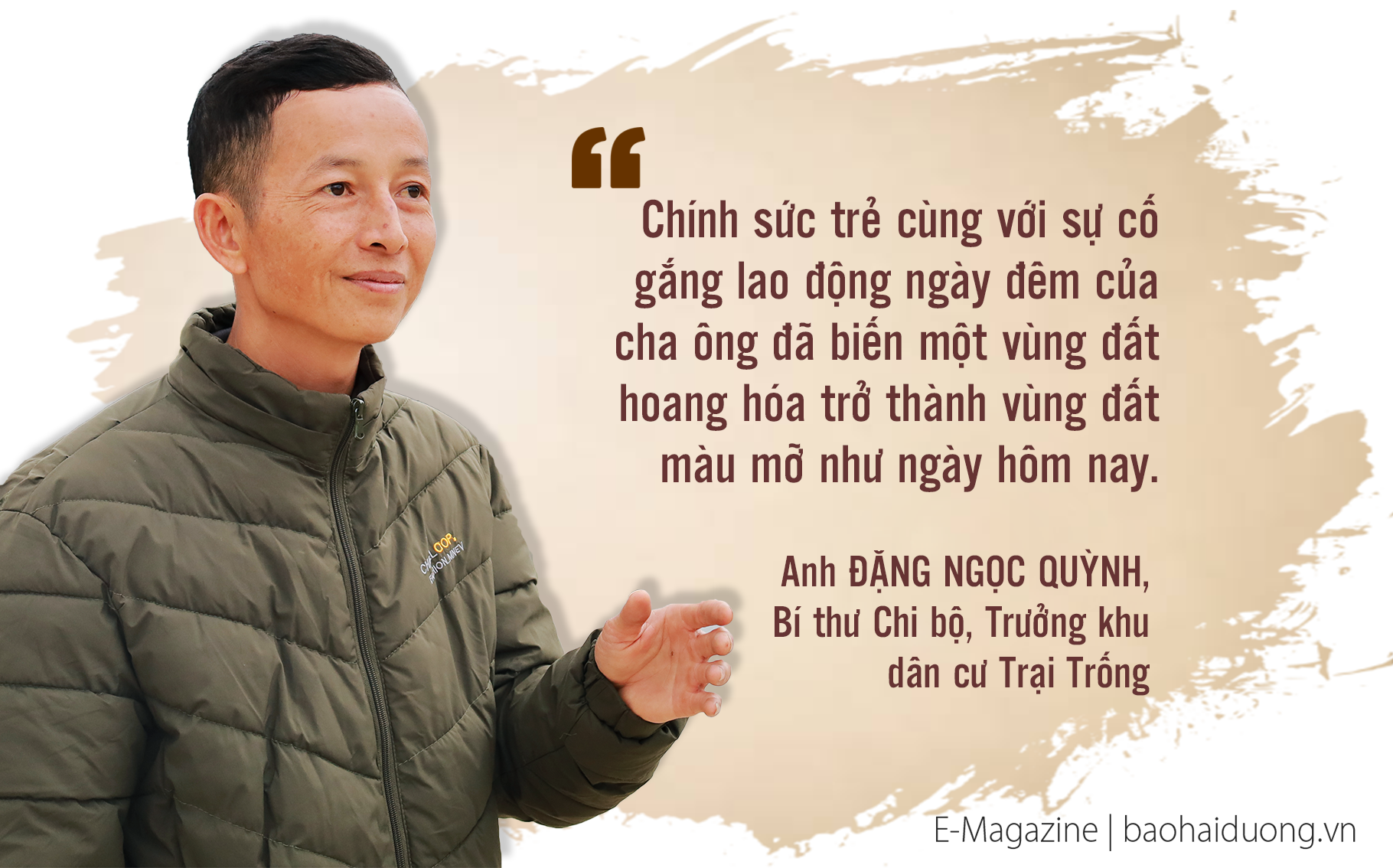
According to the grandparents, before the August Revolution, this place was just a small camp of Hoang Gian village and was a barren land. There were only 4 ethnic families living in the camp. By 1955, 5 more households from Hoang Hoa Tham commune came to reclaim and settle down. In the following years, some households from Ninh Giang, Gia Loc, Ha Bac (now Bac Giang)... came here, but most of them were from Ninh Giang district. At that time, the people who went to reclaim and restore the land in Trai Trong were all young, in their 30s. They and their families left their homeland to "sow" hope in the new land.
To learn more about the early difficult days, we met Mrs. Pham Thi Kim Quy (87 years old), one of the first households to come to reclaim land and also the oldest party member here with 65 years of Party membership. She said that in 1957, following the call of the Party and the State, her family moved from Hoang Hoa Tham commune to Trai Trong to live. Here, she was tasked with both land reclamation and work for the Women's Union. Despite her old age, the memories of nearly 70 years ago when she and her family went to start a business are still deeply imprinted in her mind.
.jpg)
Mr. Quy said that at that time, his family and 6 other families from Hoang Hoa Tham commune came to reclaim land and relied on each other to live. “At that time, our new homeland was vast but difficult in every way. The surrounding area was just wild, empty land, with only sim trees and gi anh grass growing wildly. “Breaking land” during the day was not enough, we also took advantage of the evening. There were 7 families but we broke 10 hectares of land. Wherever we reclaimed land, we planted there. The rice was sown like that, without needing fertilizer, the new land made the rice good and the yield was also quite good. We gathered together to carry rice down to Quang Ninh to sell. Although there was still a shortage, no household “went hungry”, Mr. Quy recalled with emotion.
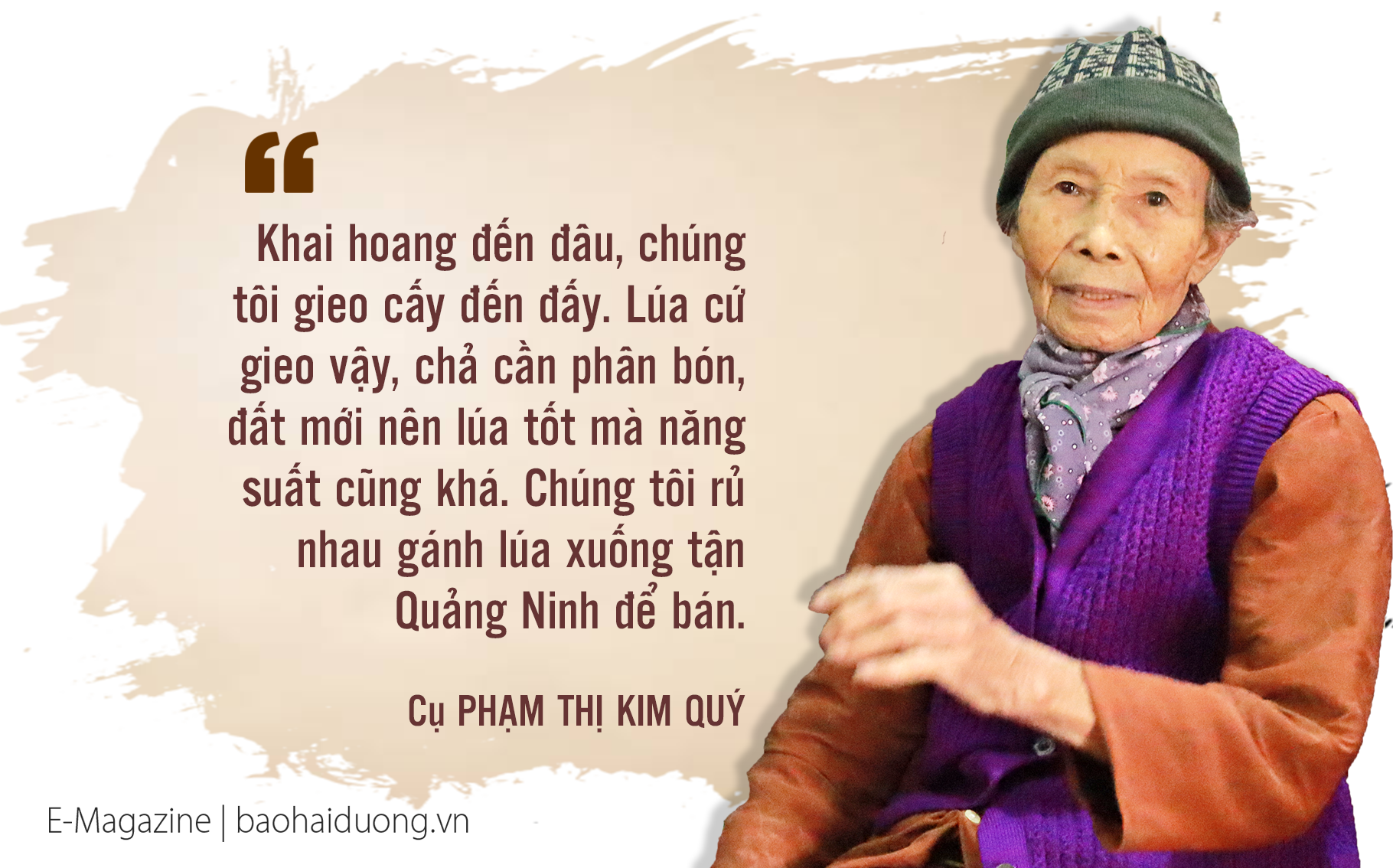
Like Mr. Quy, in 1979, Mrs. Nguyen Thi Vi (88 years old) and her husband, her mother-in-law and 6 children moved from Hong Phuc commune (Ninh Giang) to Trai Trong to start a business. She said that her hometown was a low-lying area, and every harvest season, the fields were deeply submerged in water. The family had many mouths to feed and limited land, so life was difficult. At that time, a relative came to visit and invited her family to move to Trai Trong to start a business.
“As the name Trai Trong suggests, everything was empty. At that time, there were only reeds growing wildly around, the population was sparse, and the land was barren. In the early days in the new homeland, our family had one full meal and one hungry meal. We reclaimed the land, increased production, and planted short-term crops to solve the immediate difficulties. Gradually, life became more and more stable and developed,” Mr. Vi said.
Thanks to the hard-working hands of residents like Mr. Quy, Mr. Vi and other households, the painting of Trai Trong has new colors.

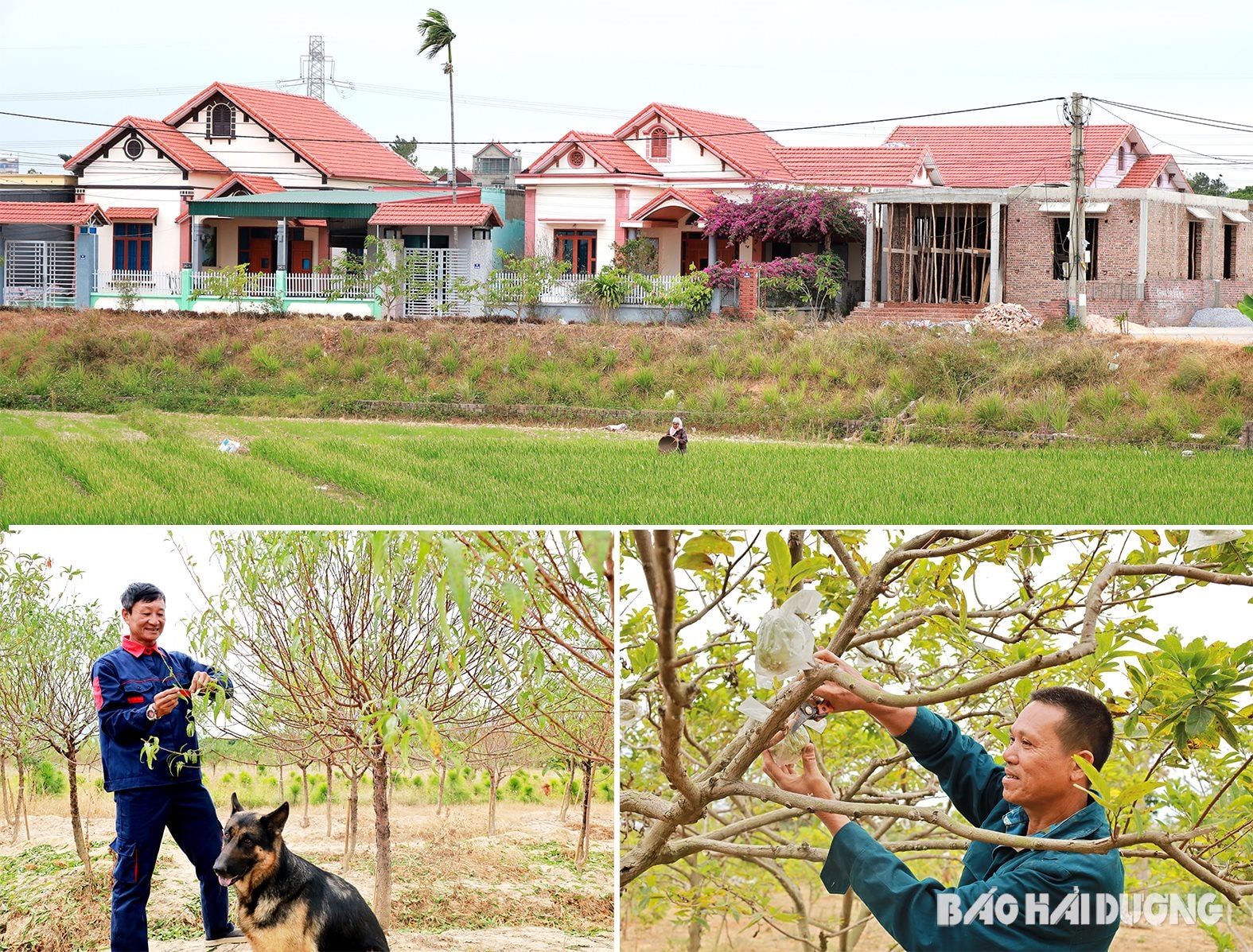
“Our hands can do everything/ With human strength, stones can turn into rice”. With that belief, after more than half a century, the residents of Trai Trong have turned the once barren land into a prosperous countryside. Reed fields have given way to fertile fields of peach and flower orchards or lush custard apple orchards. Modern, spacious Thai-roofed houses are built one after another, large, beautiful, straight concrete roads… The new look is clear evidence of the transformation of this difficult land.
After nearly 30 years of settling down and making a living in Trai Trong, from a poor household, Mr. Vu Duc Hoi's family has risen to become a well-off household. With about 1 hectare of hilly land, he chose to grow custard apples from Dong Trieu. Due to the suitable climate and terrain, his family's custard apples grew rapidly. After only about 3 years, the custard apples began to yield harvests. With 1 hectare, Mr. Hoi harvested about 5 tons of main-season custard apples and 3 tons of winter custard apples, earning more than 100 million VND in profit each year.
“When we first arrived, life was difficult, but with the spirit of overcoming difficulties, we turned the barren hills into large custard apple hills. This is also the main source of income for my family. Thanks to this custard apple garden, we have the conditions to send our children to school. Not only my family, but hundreds of households here have also made efforts to build the economy, contributing to the overall development of the residential area. The poverty and hardship of the past have given way to prosperity and development,” said Mr. Hoi.
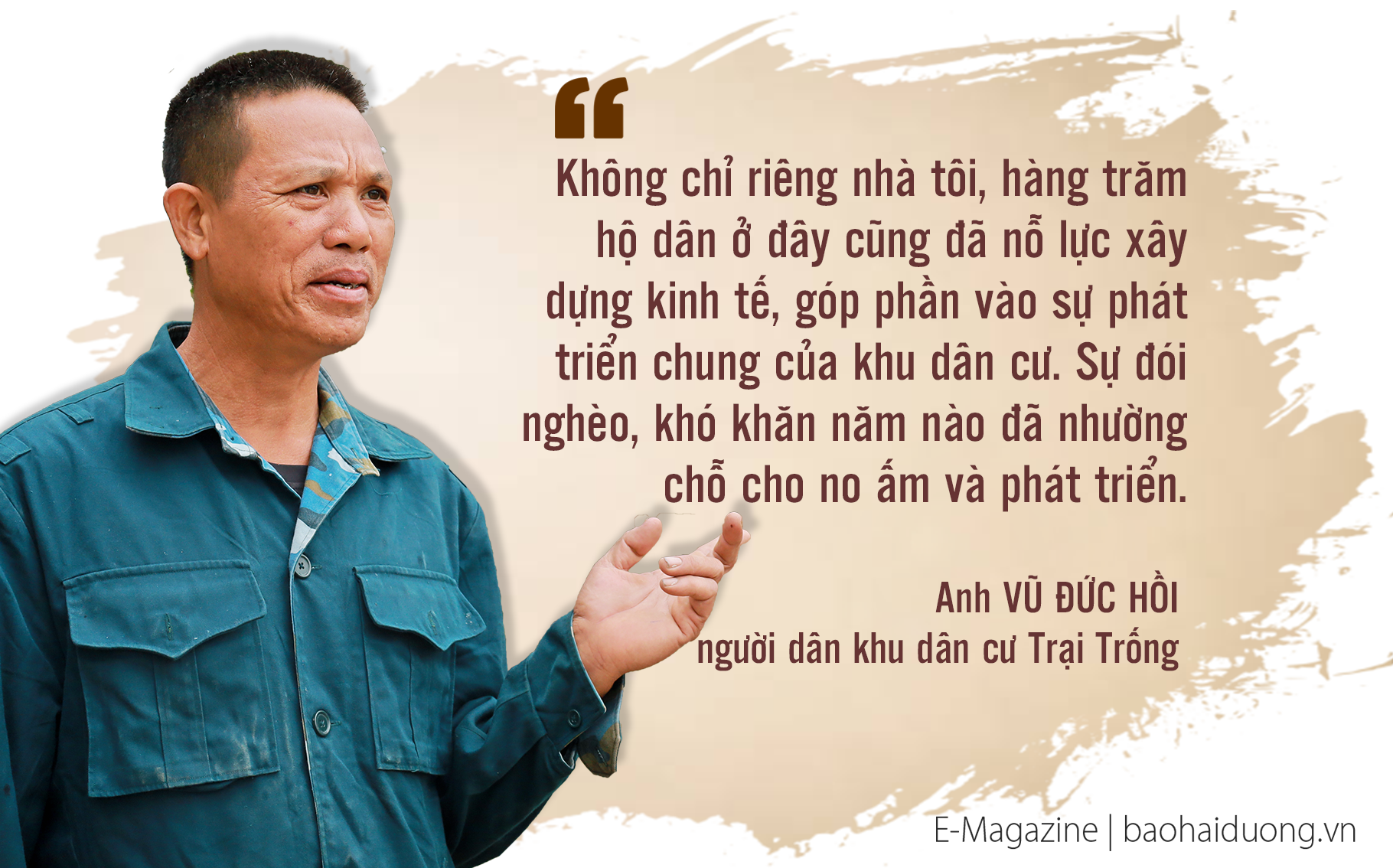
In addition to 5 hectares of custard apples, Trai Trong is also a famous peach growing area in Chi Linh City. The residential area currently has about 20 households growing 5 hectares of concentrated peaches. With the skillful hands, diligence and creativity of the local people, the peach trees have beautiful shapes, large flower buds, bright colors and are favored by consumers. In addition to consumption in the province, Trai Trong peach trees and peach branches are also sold at many spring flower fairs in Quang Ninh province.
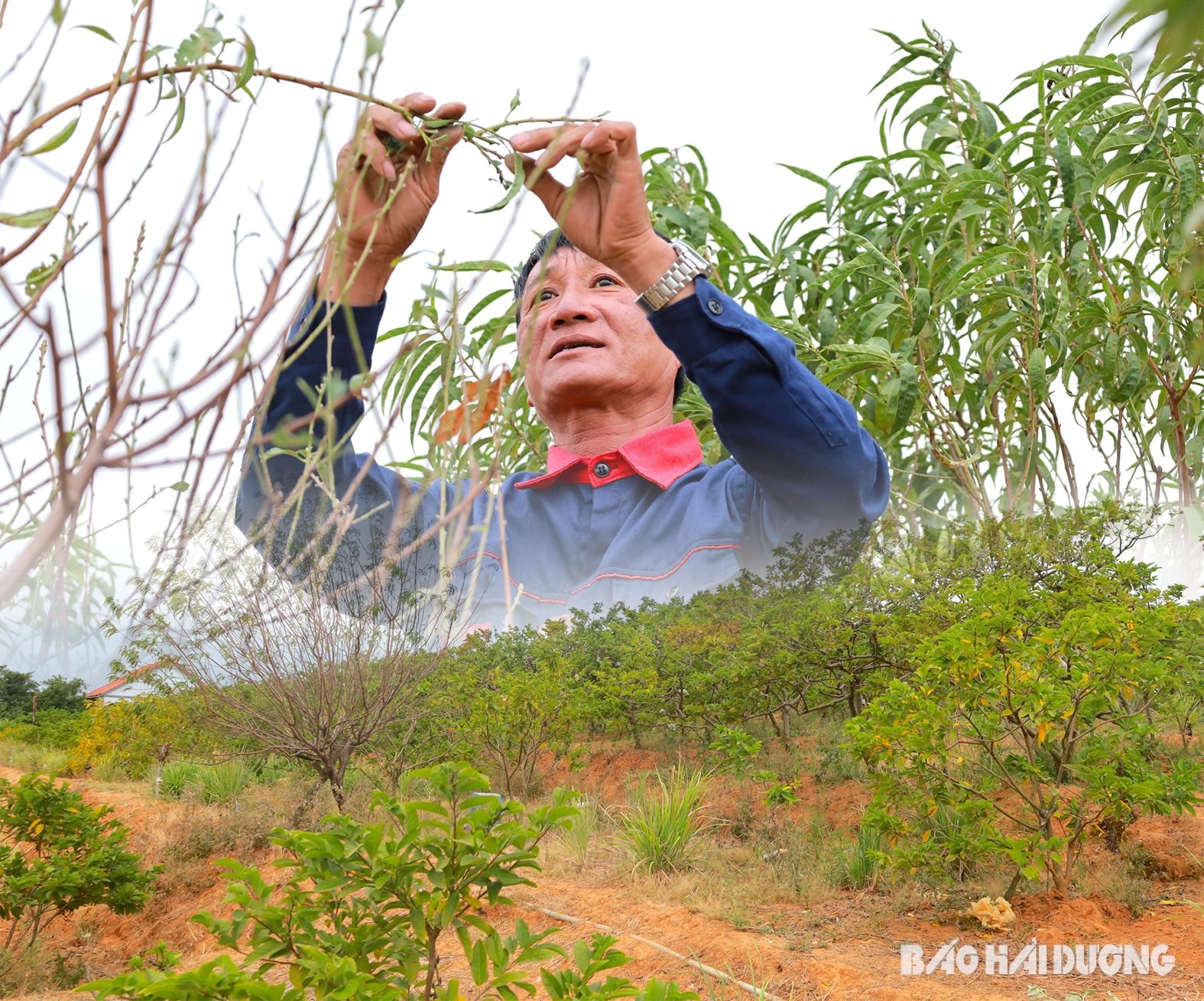
Along with agricultural economic development, Trai Trong also has 35 families with members working abroad. Every year, the amount of remittances sent back to relatives not only helps develop the family economy but also contributes to local welfare programs. Even though the children of the homeland work and live far away, if they need help, they are always willing to help.
Recently, to renovate the stadium area, the district called for support from the people. After only about 1 week of launching, 265 million VND was raised, of which My Ceramics Joint Stock Company donated 100 million VND, the rest was contributed by the children of the hometown.
Mr. Nguyen Tien Lang, Vice Chairman of Hoang Tien Ward People's Committee said: "The most precious thing of Trai Trong people is the spirit of solidarity. Although they are not from the same hometown, they came here to start a business together in difficult days, so the people are more united, closer, and help each other develop the economy."
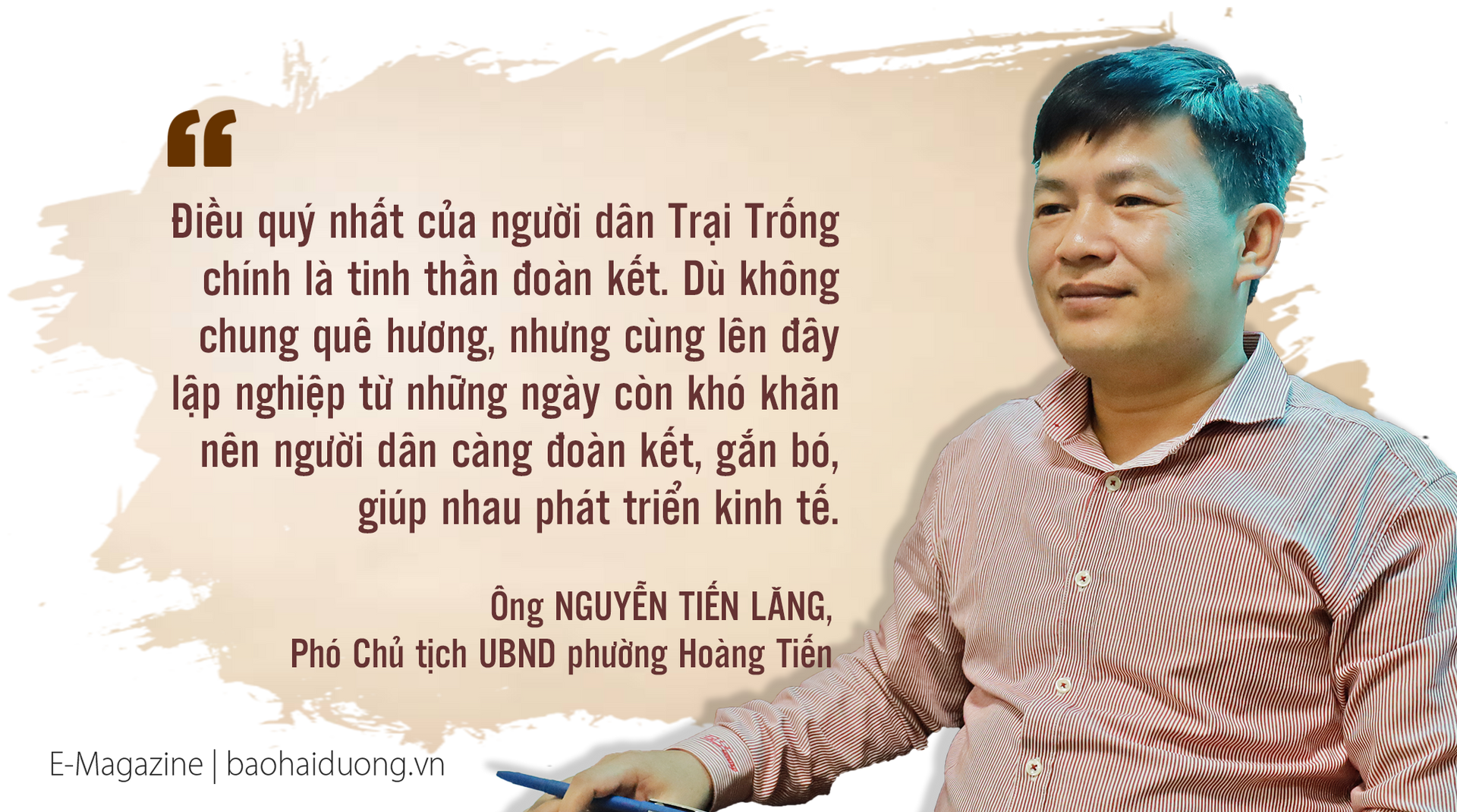
From the initial dozen households, the residential area now has 178 households with 540 people living on an area of over 50 hectares. In 2024, the average income per capita here will reach over 100 million VND/person, equivalent to the income of people in other residential areas in the area. Currently, the rate of well-off and rich households in the residential area accounts for over 78.6%, the rate of poor and near-poor households is over 2%. By 2025, Trai Trong strives to have no more poor households, only 2 near-poor households.
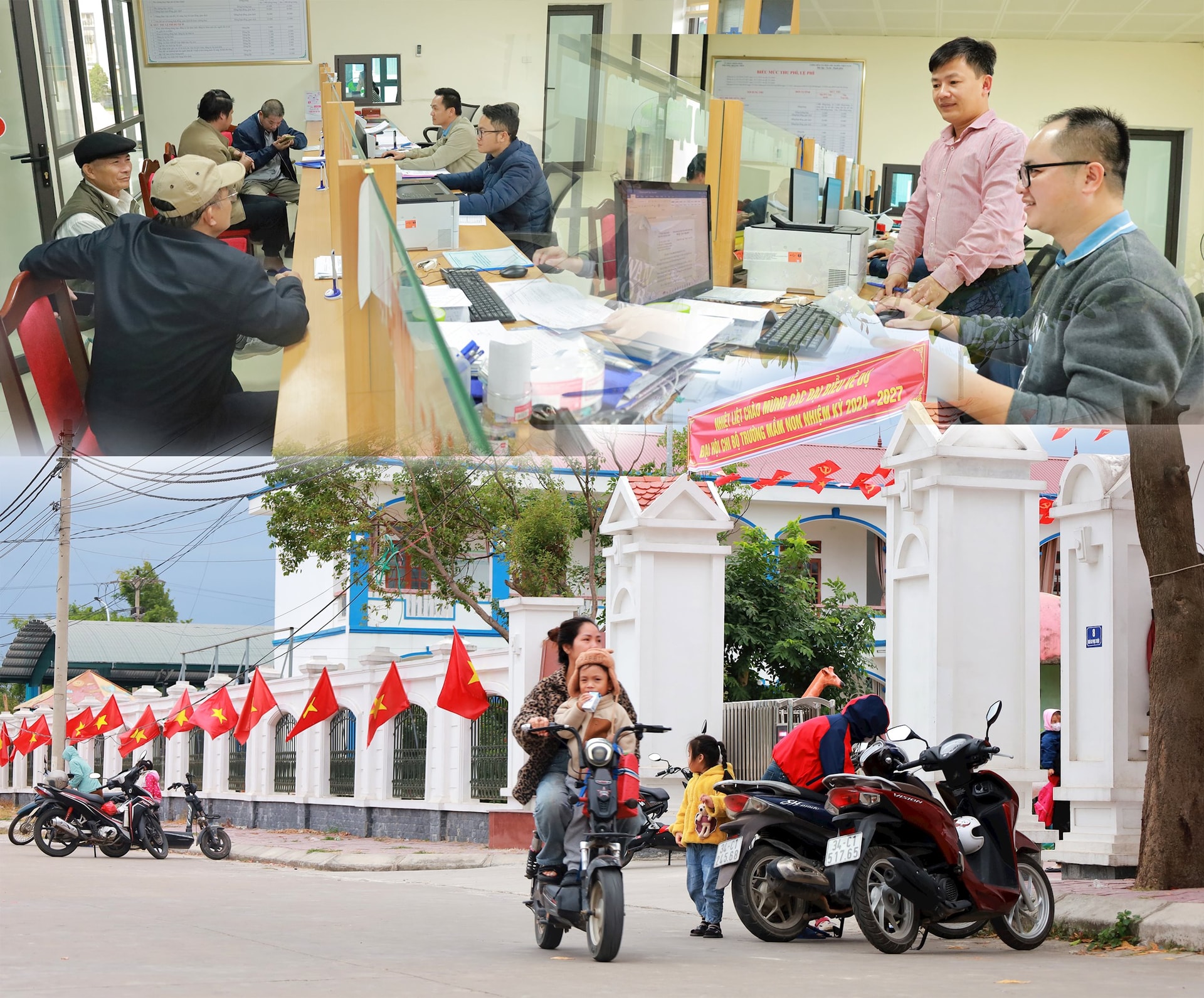
The people who went to build the “new economic zone” that year have now become seniors, some still alive, some have passed away. Their spirit of effort has been passed on to the next generation. Their descendants have continued to work together to build Trai Trong to become more and more developed.
Content:TRAN HIEN
Presentation, photos:TUAN ANH